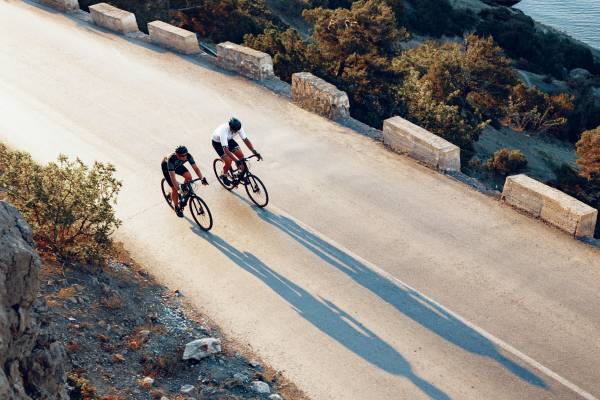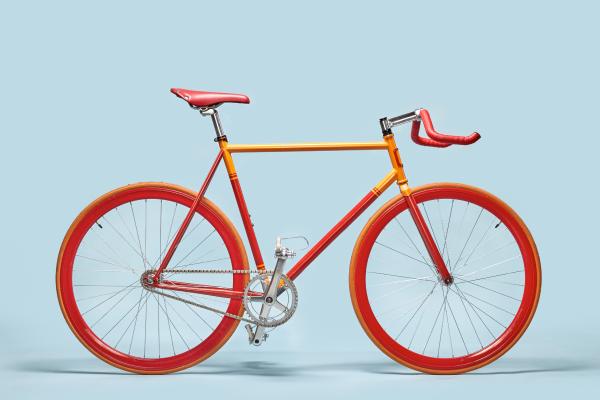-
My Cart: 0 $0
-
EN
- Call an get your test drive: +48 222-512-234

Admin, company.com
Category:Hybrid
Date:26 Feb, 2024
The nineteenth century was the century of inventions; with the industrial revolution in full swing and the demand and supply increasing, the assembly-line style of production too was introduced mainly in the nineteenth century. People started to leave their villages and move to the cities, searching for jobs and better living conditions. As soon as technology was introduced to the common man, new inventions flooded the market. From cameras to electric batteries, telephone and sewing machines, and even Coca-Cola, were all introduced in the nineteenth century. The population started to grow, and as a result, there was increased dependence on faster modes of transport. Here's where the bicycle came from.
Invented by Baron Karl von Drais in the early nineteenth century, the first bicycle had a wooden frame, and the rider was to push the vehicle along with his feet to steer the front wheel. However, in the 1860s, Pierre Michaux and Pierre Lallement added mechanical crank drive and pedals to a larger front wheel in what came to be called a velocipede. The velocipede further evolved into a penny-farthing, known as one of the first machinery, the bicycle.
The bicycle's way into the Indian subcontinent can be attributed to colonial history. The Britishers brought this vehicle to the country to ride for leisurely purposes and some to flaunt their athletic prowess. When it came initially, it was a symbol of the elite and upper-middle-class, with mostly the English and Parsi communities riding them. However, as its popularity grew, so did the production, and soon enough, the bicycle found its way into many households. Men used these bicycles to ride to work while women frolicked with their girlfriend's bicycles or to go to college.
While cycling disappeared from the public scene as other public modes of transport grew, cycling is still an integral part of India. While today we are bombarded by various options such as e-bikes, mountain bikes, hybrid bikes, geared cycles, and so many more, are we aware of the Airborne Paratrooper Bicycles? The credit given to Indian soldiers for their role in the world wars is dismal, many perished, and many rotted away as prisoners of war in foreign jails. However, most of the paratroopers in the second world war used a bicycle built by the Birmingham Small Arms [BSA]; this cycle could fold in half and be carried in the soldiers' backpacks as they were airdropped into the warzone. These bicycles afforded them the clandestine opportunity to carry out their operations.
As the bicycle trickled down to the middle and lower classes, different cycle brands represented different class sections of society. The Vikram Pendse Cycles Museum is replete with information about cycles and their history in India. In his interview with Sahapedia, he recounts that the labour class primarily rode a Hercules bicycle while the elites favoured the Raleigh. The museum holds a gents tricycle manufactured by the James Cycle Co Ltd., and it mainly was the doctors and lawyers who rode that machinery. Hence, cycles and their brands were also associated with the status one carried.
While we've learned of the cycle in India, this blog would be incomplete without talking about ten Indians who decided to globetrot across the world on their bikes. These cyclists took upon an arduous task in a decade when cycles and their parts weren't as advanced as today. The conditions of world politics, too, were dire, with many countries hit by a world war, economic depression, and pandemics. Like India, many commonwealth countries fought for their independence against a colonial regime. Yet, these young men from Mumbai decided to embark on a journey that could, in rudimentary terms, be described as life-changing.
While these cyclists were met with a lot of pomp and fervour wherever they went, it is wrong to dilute their experience to just glamour. Their journeys were often tumultuous and fraught with dangers of many varieties. They cycled without water and food; they came across tribes known for their savagery. It is said that of all these ten men, Framroze Davar's journey was the most difficult. Sometimes the terrain was so perilous that he and his partner Sztavjanik had to stuff their tires with grass.
Admin, company.com
Tags: Hybrid
Related articles
Maintaining and Upgrading Your Fitness Cycle
Explore the benefits of interval training and provide sample workouts that can help cyclists improve their speed, endurance, and overall fitness.
Admin
26 Feb,2024
View Blog












